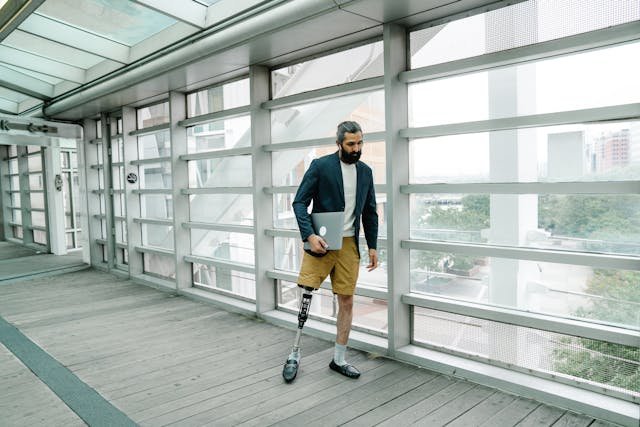Fitting a prosthetic for a child born with a limb difference is never a simple task. It’s a journey that involves more than just technology or measurements. It’s about understanding how a growing body, a developing mind, and a unique personality all come together. For families, it’s an emotional process. For clinicians, it’s a delicate balance. And for the child, it’s a new way of experiencing the world.
At Robobionics, we’ve worked with many children born with limb differences. We’ve seen what works, what takes time, and where the common challenges lie. In this article, we explore these challenges—not to overwhelm, but to prepare and empower. Because the better we understand the process, the better we can support every child in finding comfort, confidence, and freedom in their prosthetic journey.
Understanding the Differences Between Congenital and Acquired Limb Loss
The first thing to understand is that a limb difference from birth is not the same as a limb lost later in life. Children born with limb deficiencies never knew another way to move. This gives them a kind of natural adaptability, but it also creates unique needs when fitting a prosthetic.
Adapting to a Body That Feels “Normal” to the Child
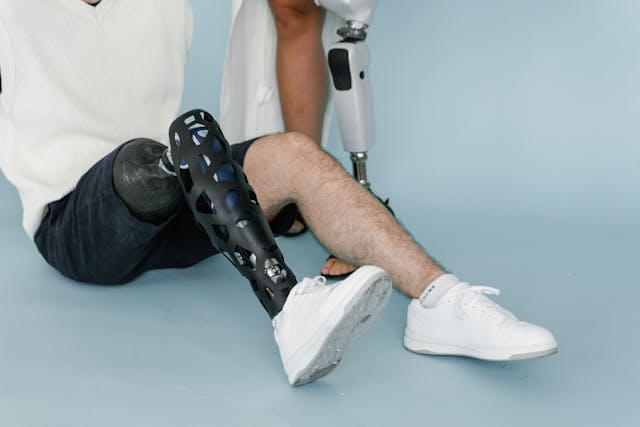
For a child born with a missing limb, their body feels complete the way it is. They don’t see anything as missing. This can make it harder for them to understand why they need a prosthetic in the first place. If they’re already managing tasks in their own way, they may resist wearing something that feels unfamiliar.
This isn’t stubbornness—it’s comfort. Children grow confident in how they use their bodies. A prosthetic introduces a new shape, a new sensation, and sometimes, new limits. The key challenge is helping the child see the prosthetic not as a replacement, but as a helpful tool that can add options to what they already do well.
At Robobionics, we take the time to introduce prosthetics gently. We use play-based methods to show how the device can fit into the child’s daily life, not take over it.
Limited Residual Limb Development
Children with congenital limb differences often have smaller or shorter residual limbs. These limbs may lack bone length or muscle mass, making it harder to fit a socket securely. If the limb doesn’t grow in the same way as the rest of the body, it adds another layer of complexity.
Fitting around a short or tapered limb requires precise customization. It also demands softer materials, better grip systems, and constant monitoring as the child grows. The prosthetic has to be secure but not restrictive—and that balance changes with each stage of growth.
At Robobionics, we design ultra-lightweight, custom-shaped sockets that offer both comfort and hold. Our fittings account for future growth while ensuring a snug, non-painful fit from the very start.
Timing the First Fit Correctly
One of the biggest questions families face is: when should we start? Fit too early, and the child may reject the device. Fit too late, and the child may have already developed habits that are hard to change. There’s no one-size-fits-all answer.
The right time depends on your child’s readiness—not just physically, but emotionally. Some children benefit from early passive prosthetics that help with balance and symmetry. Others do better when they’re a bit older and can actively engage in the fitting process.
At Robobionics, we work closely with parents and therapists to decide the right time to start. We never rush the process. Our goal is always to make the first experience as positive and meaningful as possible.
The Challenge of Growth and Changing Needs
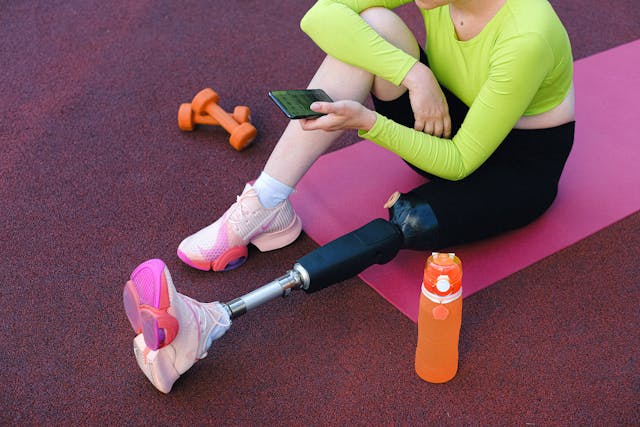
As children grow, their bodies change quickly—and so do their needs. What fits perfectly at age two might be uncomfortable by age three. This constant change is one of the biggest challenges in pediatric prosthetic care. Growth is not just vertical. It affects limb shape, skin sensitivity, muscle tone, and movement patterns.
Outgrowing Sockets and Components Frequently
Children grow fast, especially during the early years. This means they may outgrow their prosthetic socket every 6 to 12 months. Sometimes it’s faster. A socket that once fit well can suddenly feel tight, cause redness, or slip during movement.
Frequent replacements are necessary, but they also bring stress. Each new socket needs adjustments, follow-up visits, and adaptation time. It can disrupt routines and even cause your child to resist wearing the device for a while.
At Robobionics, we create modular prosthetics with adjustable elements. This allows us to extend usage for longer periods between replacements and make small changes without building an entirely new device each time.
Adapting Prosthetics to New Activities and Goals
As your child grows, they try new things—playing sports, riding a bicycle, learning instruments, or participating in school activities. A prosthetic that worked for crawling or early walking may not suit these more complex actions.
This shift requires a new approach. Sometimes the solution is a different terminal device, a stronger joint, or a sport-specific prosthetic. But often, it’s about listening. What does your child want to do? How can the prosthetic support—not limit—their goals?
Robobionics offers activity-based prosthetic attachments designed just for kids. Whether it’s holding a cricket bat or learning to paint, we make sure the device fits your child’s passion, not just their limb.
Emotional Changes During Development
As children grow older, their awareness of being different may also grow. In early childhood, they might not notice stares or questions. But during school age or adolescence, they may begin to feel self-conscious or unsure about wearing their prosthetic in front of others.
This emotional shift can affect how much they use their prosthetic. Some may stop wearing it altogether. Others may want a more cosmetic look, or a design that feels more “them.” It’s important to honor these changes and allow your child to be part of the decision-making.
At Robobionics, we support full personalization of prosthetics—from colors to design patterns. When children feel like their device reflects who they are, they’re more likely to wear it with confidence.
Managing Fit, Comfort, and Skin Sensitivity
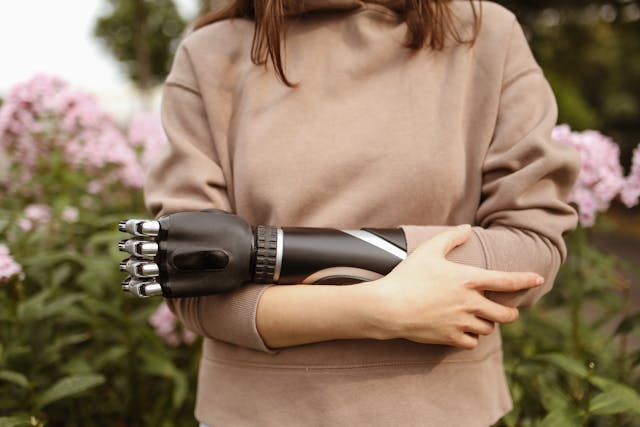
Comfort is one of the most important parts of successful prosthetic use. If a child doesn’t feel good wearing their prosthetic, they’re less likely to use it. For children with congenital limb deficiencies, comfort can be even harder to get right—especially when their skin is delicate or their residual limb is short or tapered. A prosthetic should feel like a part of the body, not something the child is constantly aware of.
Dealing With Skin Irritation and Pressure Points
Because the residual limb may not have full muscle or tissue coverage, the skin can be sensitive and more easily irritated. Friction, heat, sweat, or even a slightly off-center socket can lead to redness, blisters, or pressure sores. And young children may not always be able to explain what feels wrong. They might just cry, avoid the prosthetic, or pull it off.
That’s why it’s critical to check the limb every day. Even a small red spot can turn into a bigger issue if not addressed. Parents and caregivers need to stay alert, and the prosthetist should be responsive and able to adjust the fit quickly when needed.
At Robobionics, we design our sockets using soft-touch liners and breathable materials that reduce heat and pressure. We also train families to spot early signs of discomfort so they can act fast and avoid larger issues.
Achieving a Secure But Gentle Fit
For children with very short residual limbs, getting the prosthetic to stay on can be a challenge. Traditional suspension methods, like straps or suction, may not work as well. And if the limb is growing unevenly or has bone differences, it can be hard to find a perfect balance between support and freedom of movement.
The solution is often a mix of socket design, suspension system, and flexible materials. The prosthetic needs to stay in place during activity but come off easily when the child is resting. It must hold without squeezing. This kind of precision takes experience and attention to detail.
Robobionics uses advanced 3D scanning and digital modeling to create sockets that fit securely and distribute pressure evenly. Our goal is always a “barely-there” feeling that lets children move without distraction.
Listening to What the Child Is Feeling
Even if the prosthetic looks like it fits perfectly, it’s the child’s experience that matters most. They may not always have the words to describe what’s wrong, especially at a young age. But their behavior tells the story. If they avoid using the prosthetic, act frustrated, or seem tired after wearing it, those are signs that something needs to change.
We always remind families to trust their child’s reactions. Ask simple questions like “Does it feel tight?” or “Is it poking you?” If something doesn’t feel right, we adjust—without blaming the child or forcing use.
At Robobionics, we create a safe space for children to speak up. We believe that comfort is not just a physical fit—it’s also emotional trust.
Timing and Pace of Training and Therapy
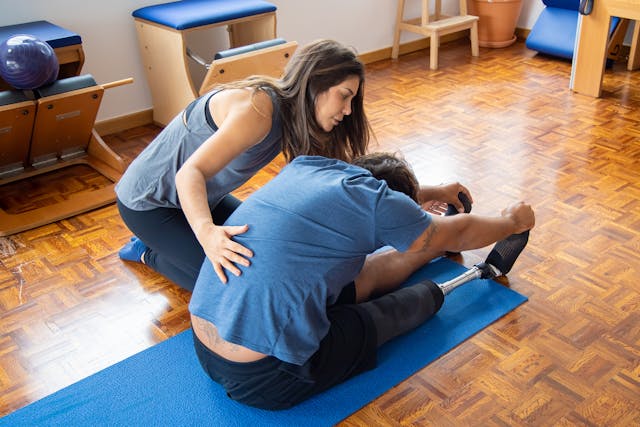
Even with the best prosthetic design, children need time and guidance to learn how to use it. Fitting the device is just the beginning. What follows is training, therapy, and a learning curve that can be short or long—depending on the child’s age, interest, and support system.
Balancing Therapy With Natural Play
For very young children, therapy shouldn’t feel like a chore. The best training often happens through natural play. Games that involve reaching, pushing, balancing, or grabbing help children strengthen muscles and learn coordination without realizing they’re in therapy.
Still, some children may need structured physical or occupational therapy to build specific skills, especially if they’ve never used a prosthetic before. These sessions help with learning how to balance, how to use both arms or legs together, and how to prevent bad habits from forming.
At Robobionics, we work closely with therapists to ensure our prosthetics support these goals. We also offer gamified rehab tools that help make practice feel like play.
Allowing the Child to Set the Pace
Some children take to prosthetics quickly. Others may need more time. And that’s okay. Rushing a child into using a device before they’re ready can lead to rejection, discomfort, or even fear. The best progress happens when the child feels in control.
Let your child take breaks. Let them say “not today.” Celebrate small wins. When they feel like the prosthetic is a choice—not a rule—they’re more likely to explore it with curiosity and joy.
At Robobionics, we always remind families: trust the process. Progress isn’t always fast or visible at first—but with time, the results come.
Supporting Use at Home and School

Once the child is comfortable using their prosthetic in therapy or at home, it’s time to help them carry those skills into school, social settings, or new environments. This is often the hardest step. Children may feel shy about wearing the device in public or worry about questions from friends.
The best support comes from a united front—parents, teachers, and therapists working together. Share goals. Talk about challenges. Stay flexible. The more the child feels supported in all areas of life, the more success they will have.
Robobionics offers school kits and awareness tools to help ease this transition. We believe that a child should never feel alone in their journey.
Financial and Logistical Challenges for Families
Behind every prosthetic journey is a family doing everything they can. But we understand that it’s not always easy. Finding the right care, attending regular appointments, and managing the costs can be overwhelming. These challenges are real—but there are ways to make the path easier.
Managing the Cost of Ongoing Care
Children grow, and prosthetics need replacement or adjustments often. For families, this means recurring costs—not just for the devices, but also for travel, therapy, and time off work. If the prosthetic is imported or not locally serviced, delays and expenses can increase even more.
That’s why having a local, reliable provider matters. At Robobionics, we are proud to offer Made-in-India prosthetics that reduce long-term costs. Our local service centers ensure faster repairs, easier access, and real-time support.
We also work with NGOs, CSR partners, and foundations to help families access funding for their child’s prosthetic journey. No family should have to choose between care and affordability.
Handling Appointments and Time Commitments
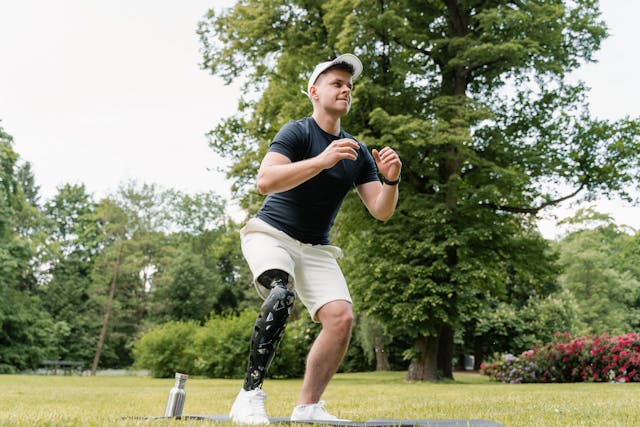
Fitting a prosthetic isn’t a one-day visit. It takes multiple fittings, follow-ups, therapy sessions, and sometimes unexpected adjustments. For working parents or those living far from a clinic, this can be hard to manage.
Robobionics offers flexible scheduling, virtual check-ins, and home-based training programs to ease this burden. Our goal is to bring care closer to where families are—so that distance or time never becomes a barrier to progress.
Staying Informed and Empowered
One of the most common challenges families face is simply not knowing what to expect. What happens next? When should the next fitting be? What signs should they watch for? Clear, honest information is one of the most powerful tools a family can have.
At Robobionics, we provide step-by-step guidance, printed resources, and real conversations that help families stay informed and confident. Because when you understand the path, you can walk it with strength.
Conclusion
Fitting prosthetics for children with limb deficiencies from birth comes with many challenges—but each one can be overcome with the right care, patience, and understanding. It’s not just about finding the right device. It’s about building a support system that includes the child, the family, the clinician, and the wider community.
From physical fit to emotional readiness, from early therapy to long-term planning, every part of the journey matters. At Robobionics, we believe that prosthetic care is not just a service—it’s a partnership. We stand with families at every stage, offering smart solutions, empathetic support, and the kind of care that sees the whole child, not just the limb.
If your child was born with a limb difference and you’re exploring prosthetic options, we’re here for you. Book a free consultation with Robobionics today and take the first step toward a more confident, comfortable future.



